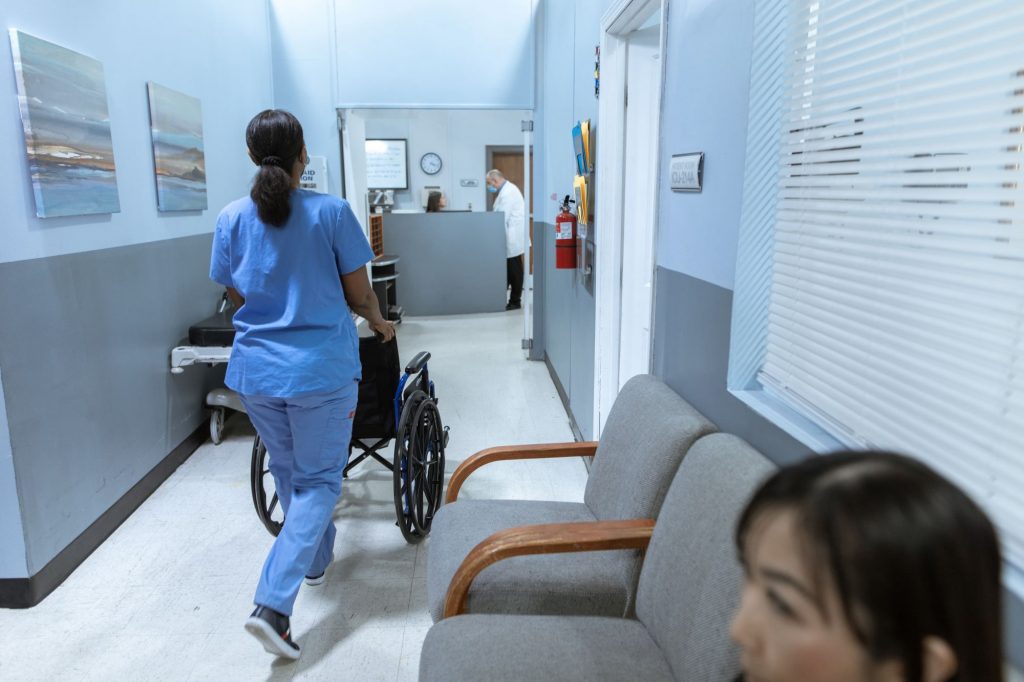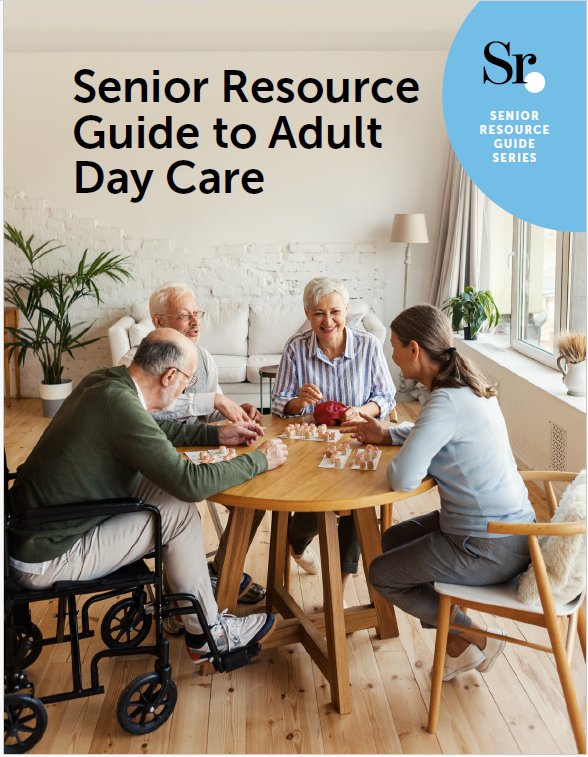Hospice Care

End-of-life care. It's a topic that carries an emotional weight for family, caregivers, and ourselves. And, understandably so. Yet, it's a conversation that needs to be had, not only for the peace of mind it brings but also for the financial implications it carries. Hospice care, or comfort care as it's often referred to, doesn't have to be an additional source of stress.
What is Hospice Care?

Hospice care is medical support for those who are nearing the end of life. Patients whose life expectancy is 6 months or less begin treatment that is focused on comfort and symptom management. Care is provided with a goal of quality over quantity.
What Does Hospice Include?

Hospice is a comprehensive approach designed to provide comfort and support during life's final journey. Here's everything it generally includes:
- Medication for symptom control and/or pain relief - ensuring that discomfort is minimized as much as possible.
- Medical equipment such as oxygen, catheters, hospital beds, wheelchairs, or other mobility aids.
- Access to an emergency physician or nurse - should a health issue arise unexpectedly.
- Medical supplies for at-home care - making sure you have everything you need right where you need it.
- Personal care assistance - providing help with daily tasks and enhancing the quality of life.
- Grief counseling and emotional support - providing a safe space to express feelings and navigate through emotional challenges.
Who Needs Hospice?

Hospice care is a specialized form of healthcare designed to provide comfort and support to individuals who are terminally ill or whose life expectancy is estimated to be six months or less. The decision to initiate hospice care is a significant one, involving both the patient and their loved ones. It's not taken lightly and requires the agreement of a doctor and the hospice care team.
This consensus is based on a comprehensive evaluation of the person's health status, including the progression of their illness, their physical symptoms, and their overall quality of life. The team will consider medical history, current health conditions, and the likely trajectory of the disease. It's important to note that this doesn't mean the person will pass away within six months. Instead, it suggests that, based on medical knowledge and experience, the person's condition is severe enough that their life might realistically be nearing its end within this timeframe.
Important: Hospice care has no duration limit. Even though a patient must be determined near the end of life when accepted, care can exceed 6 months, as long as their condition is considered life-limiting.
Where is Hospice Care Received?

Hospice care is a versatile service that can be provided in various settings, ensuring that patients receive the necessary comfort and support wherever they reside. It's not limited to a specific location and can be administered at the patient's family home, enabling them to remain in a familiar and comforting environment during their final days.
In addition, hospice care can also be extended to nursing homes and assisted living facilities. In these settings, the hospice team works closely with the facility's staff to ensure that the patient's medical, emotional, and spiritual needs are met. This collaborative approach ensures a seamless integration of hospice care within the existing care plan.
Under certain circumstances, hospice care can even be provided in a hospital setting. This usually happens when the patient's symptoms become too complex to manage at home or in other facilities. The hospice team then works with the hospital staff to provide specialized end-of-life care.
Some hospices also offer their own residential facilities. These are designed to feel more like a home than a medical facility, providing a comfortable space for patients who cannot stay at home but still wish for a homely environment.
Regardless of the setting, a key aspect of hospice care is collaboration. A multidisciplinary care team, including doctors, nurses, social workers, and spiritual advisors, works together with the patient's family members to choose the best treatment options. They consider the patient's condition, preferences, and the family's capacity to provide care to create a personalized care plan. This comprehensive approach ensures that the patient's final days are as comfortable and meaningful as possible.
4 Types of Hospice Care

Routine Home Care
Routine home care is a foundational level of hospice care delivered wherever the patient resides. Whether it's their family home, an assisted living facility, or a nursing home, the goal is to provide comfort and maintain the highest possible quality of life within a familiar environment. This level of care is provided when the patient is not in a state of medical crisis and involves a team of healthcare professionals making regular visits to the patient's residence.
The team typically includes hospice physicians, registered nurses, social workers, spiritual counselors, and home health aides. Their collective aim is to administer a blend of custodial and medical services tailored to the patient's unique needs and preferences.
Among the services provided under routine home care are medical care and symptom management. This involves administering medications, monitoring vital signs, managing pain, and adjusting treatment plans as necessary. The care team also provides assistance with daily living activities such as dressing, bathing, skincare, haircare, and changing bed linens. In some cases, they may also help with tasks like bandage changes and incontinence care.
In addition to physical care, routine home care also encompasses emotional and spiritual support. This might include counseling sessions for the patient and their family, bereavement support, and spiritual guidance according to the patient's beliefs and preferences.
Nutritional services are another important component. The care team can provide dietary advice, meal planning, and feeding assistance to ensure the patient's nutritional needs are met.
Lastly, therapeutic services such as physiotherapy, occupational therapy, or speech therapy may also be included in Routine Home Care, depending on the patient's condition and needs.
Continuous Home Care
Continuous home care (CHC) is an intensive level of care provided to hospice patients who are experiencing a medical crisis that requires more than eight hours of nursing services in a day. It's an extension of routine home care services, designed to manage severe symptoms and stabilize the patient's condition while keeping them in their homes.
The primary goal of CHC is to control or alleviate severe pain and other distressing symptoms that cannot be managed through routine home care. The care team aims to prevent unnecessary hospital admissions and provide maximum comfort for the patient.
As part of CHC, a nurse or healthcare professional stays with the patient to provide immediate and continuous care. This can include monitoring vital signs, administering medications, managing pain, and providing emotional support.
General Inpatient Care
General inpatient care (GIP) is a higher level of hospice care that is provided when a patient's symptoms become too severe to manage at home or in other settings. This type of care is typically administered in a hospital, hospice facility, or skilled nursing facility where the patient can receive round-the-clock medical supervision and intervention.
The primary goal of GIP is to manage acute medical symptoms that cannot be controlled at the routine home care level. The care team, which usually includes physicians, nurses, social workers, and spiritual counselors, works together to provide intensive medical care, pain management, and emotional support.
The services under GIP may include but are not limited to: administering and adjusting medications, intravenous therapy, wound care, laboratory monitoring, and respiratory therapy. It also provides emotional and spiritual support for patients and their families during this challenging time.
Respite Care
Respite care offers temporary relief to primary caregivers who provide most of a hospice patient's care at home. It recognizes that caregiving, while rewarding, can be physically and emotionally exhausting. Hence, respite care provides an opportunity for caregivers to rest and rejuvenate, ensuring they can continue to provide quality care to their loved ones.
With respite, the patient is temporarily moved to a hospital, hospice inpatient facility, or nursing home. During this period, trained medical professionals take over the caregiving responsibilities, providing around-the-clock care and monitoring the patient's health condition.
Services provided during respite care for hospice patients usually include medical care and symptom management, assistance with daily living activities, nutritional services, and emotional support. This ensures that the patient continues to receive the necessary care and attention even in the absence of their primary caregiver.
The duration of respite care varies based on the needs and circumstances of the caregiver and patient. At the end of the respite period, the patient returns home, and the primary caregiver resumes their caregiving duties.
Who Works in Hospice?

Caregivers range from doctors to family members to volunteers. Who is administering care depends on the patient and family's needs. Common hospice care teams will include a combination of doctors, nurses, and home health aides. Other team members include:
- Social workers
- Bereavement counselors
- Therapists
- Spiritual counselors
- Volunteers
How to Pay for Hospice Care

Hospice can be paid for through Medicaid, private insurance, and out-of-pocket, though if a patient receives Medicare (65 and older), it is 100% covered (as long as the hospice provider is Medicare-approved). This means Medicare will pay for all medical and nursing services, pain management medication, medical equipment, grief counseling, and any other services necessary.
Important, Medicare does not cover:
- Treatments intended as a cure
- Prescription drugs intended to cure
- Room and board if residing in a nursing facility
Choosing Hospice Care

Obtaining the best possible care for you or a loved one nearing the end of life is important. Before choosing a hospice care provider, ask providers these questions:
- Is the program Medicare-approved?
- How soon can care begin?
- What levels of care are provided?
- How often do team members visit a home in routine home care?
- What medical services are available for in-home care? And, at what point do services necessitate an in-patient stay?
Be sure to ask your doctors for referrals and recommendations and take tours of facilities when offered.
Read More About Hospice Care
Listen to Podcasts About Hospice Care
Find Hospice Care Near Me:
- Alabama
- Alaska
- Arizona
- Arkansas
- California
- Colorado
- Connecticut
- Delaware
- District of Columbia
- Florida
- Georgia
- Guam
- Hawaii
- Idaho
- Illinois
- Indiana
- Iowa
- Kansas
- Kentucky
- Louisiana
- Maine
- Maryland
- Massachusetts
- Michigan
- Minnesota
- Mississippi
- Missouri
- Montana
- Nebraska
- Nevada
- New Hampshire
- New Jersey
- New Mexico
- New York
- North Carolina
- North Dakota
- Ohio
- Oklahoma
- Oregon
- Pennsylvania
- Puerto Rico
- Rhode Island
- South Carolina
- South Dakota
- Tennessee
- Texas
- Utah
- Vermont
- Virgin Islands
- Virginia
- Washington
- West Virginia
- Wisconsin
- Wyoming








